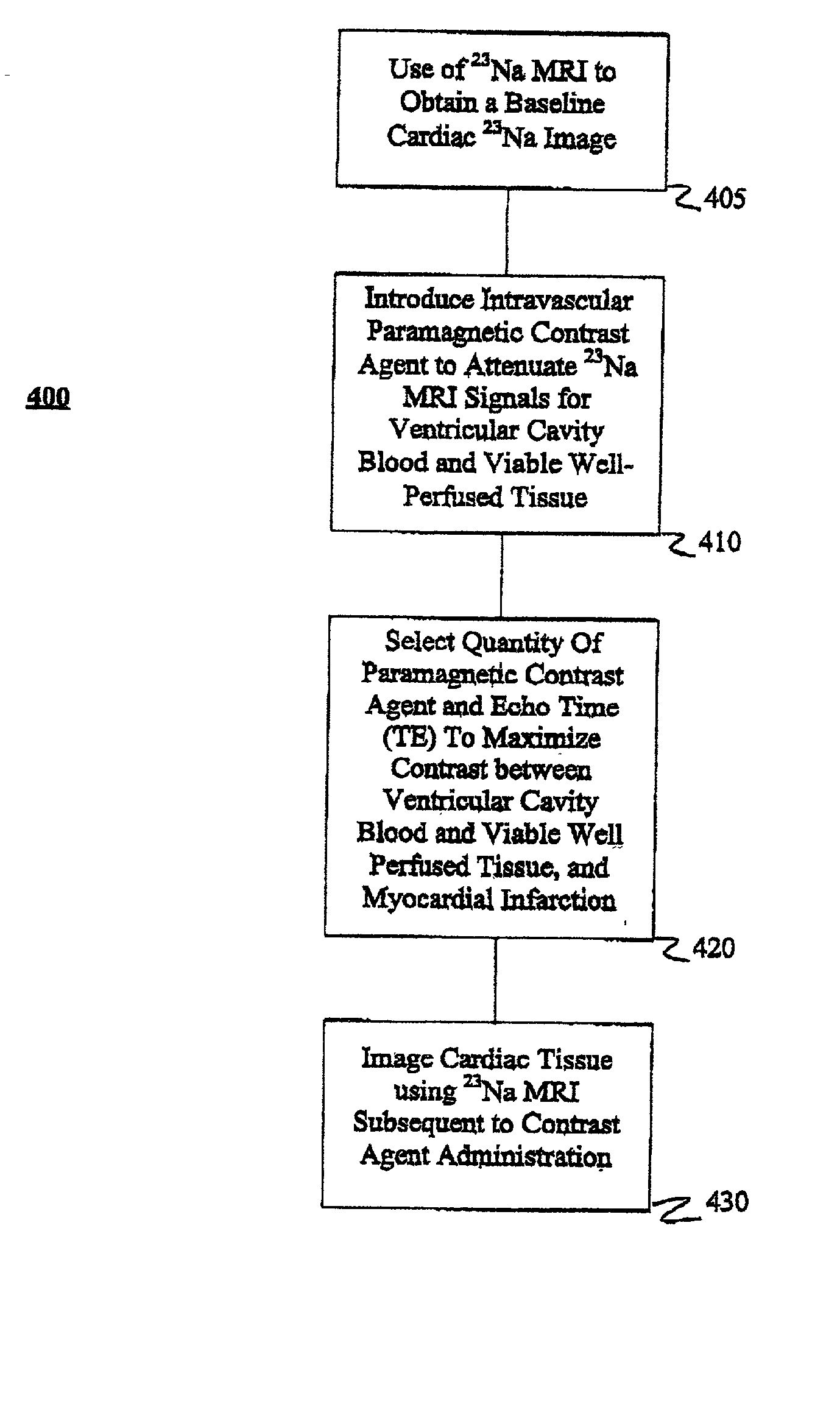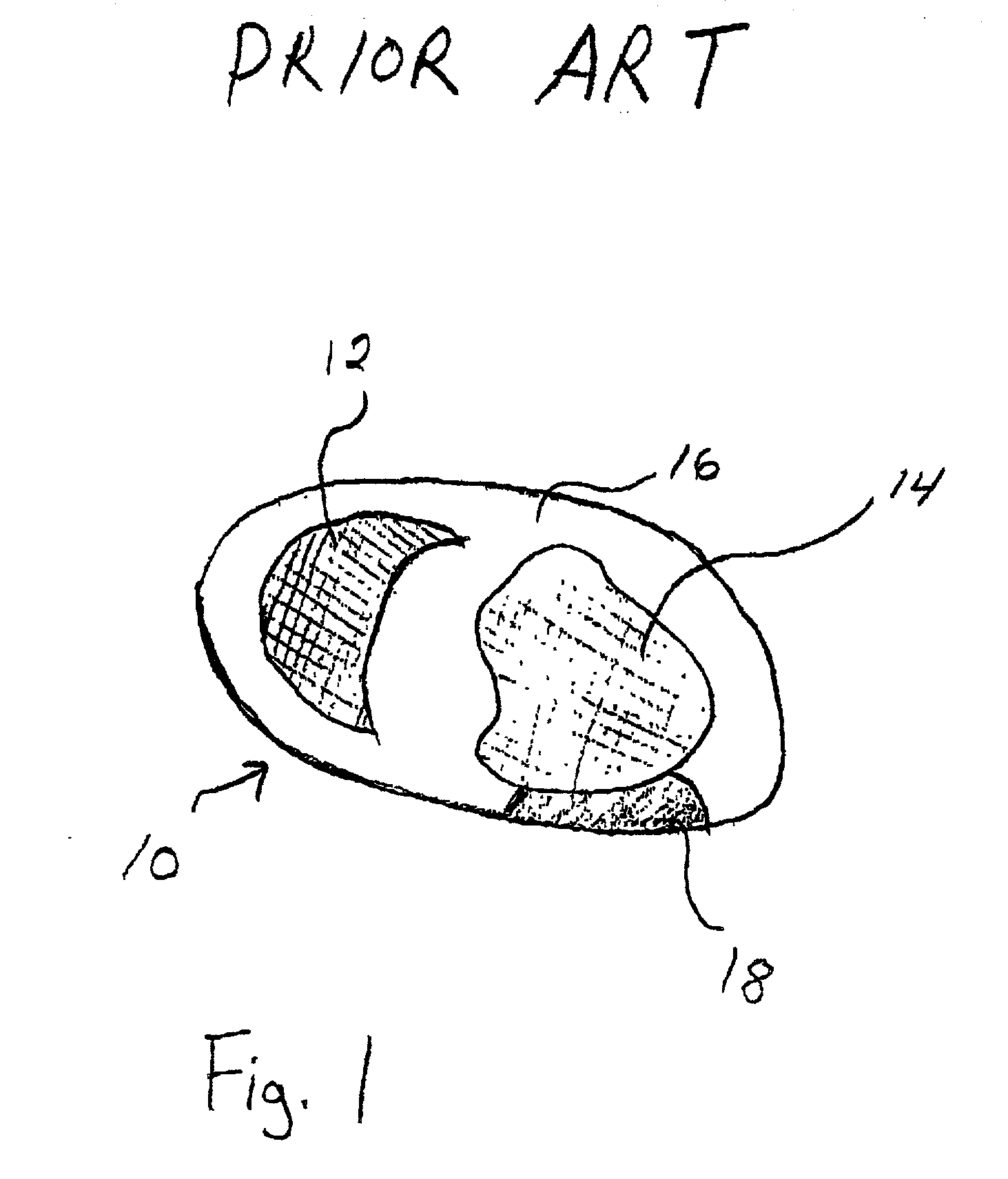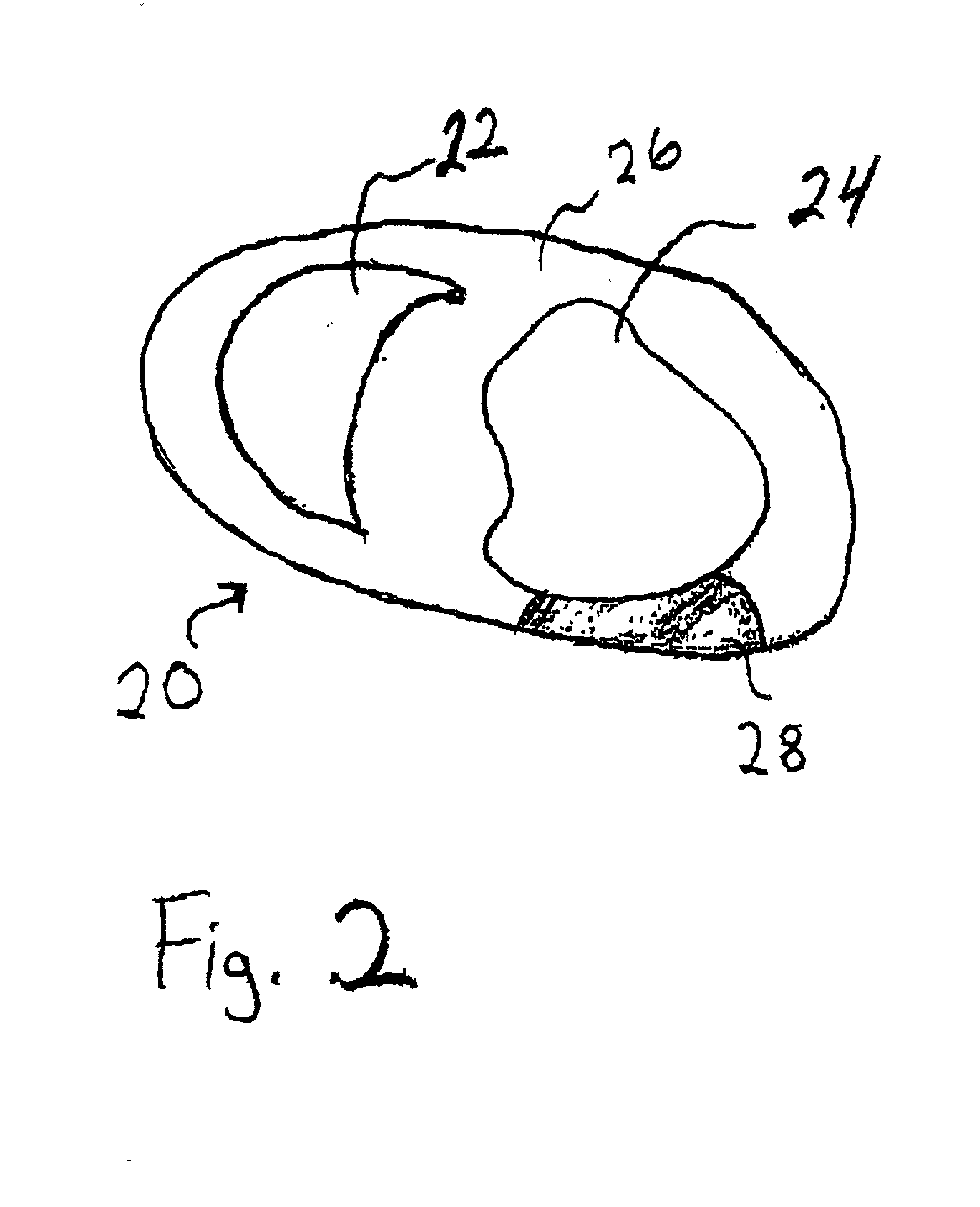Magnetic resonance imaging methods and compositions
a magnetic resonance imaging and composition technology, applied in the field of magnetic resonance imaging (mri), can solve the problems of coarse spatial resolution, sensitivity reduction, and low spatial resolution achieve the effect of improving the accuracy of .sup.23na mri images, reducing the cost of mri imaging, and improving the accuracy of mri imaging
- Summary
- Abstract
- Description
- Claims
- Application Information
AI Technical Summary
Benefits of technology
Problems solved by technology
Method used
Image
Examples
Embodiment Construction
[0062] Experiments were performed and data were collected employing the present method in a canine model of myocardial infarction. Specifically, the experiments were directed to evaluating variation in the blood T.sub.1 and T.sub.2 relaxation times with increasing MION-46 amounts and determining the optimal dose for contrast-enhanced .sup.23Na cardiac MRI in normal canine hearts in vivo.
[0063] All MRI studies were performed with a commercially available 1.5T MRI system (Signa, Horizon, Echo Speed, 5.7 Epic platform, GE Medical Systems, Milwaukee, Wis.) equipped with broadband spectroscopy capabilities, using a 16-pole quadrature .sup.23Na birdcage coil tuned to 16.89 MHz and interfaced with a quadrature hybrid splitter. .sup.23Na MRI was performed with a three-dimensional (3D) twisted projection imaging (TPI) sequence using conventional scanner hardware with gradient having a maximum amplitude of 2.2 mT / m, a maximum slew rate of 12 mT / cm / s, and with a slew rate duty cycle limit of 2...
PUM
| Property | Measurement | Unit |
|---|---|---|
| echo time | aaaaa | aaaaa |
| core size | aaaaa | aaaaa |
| diameter | aaaaa | aaaaa |
Abstract
Description
Claims
Application Information
 Login to View More
Login to View More - R&D
- Intellectual Property
- Life Sciences
- Materials
- Tech Scout
- Unparalleled Data Quality
- Higher Quality Content
- 60% Fewer Hallucinations
Browse by: Latest US Patents, China's latest patents, Technical Efficacy Thesaurus, Application Domain, Technology Topic, Popular Technical Reports.
© 2025 PatSnap. All rights reserved.Legal|Privacy policy|Modern Slavery Act Transparency Statement|Sitemap|About US| Contact US: help@patsnap.com



